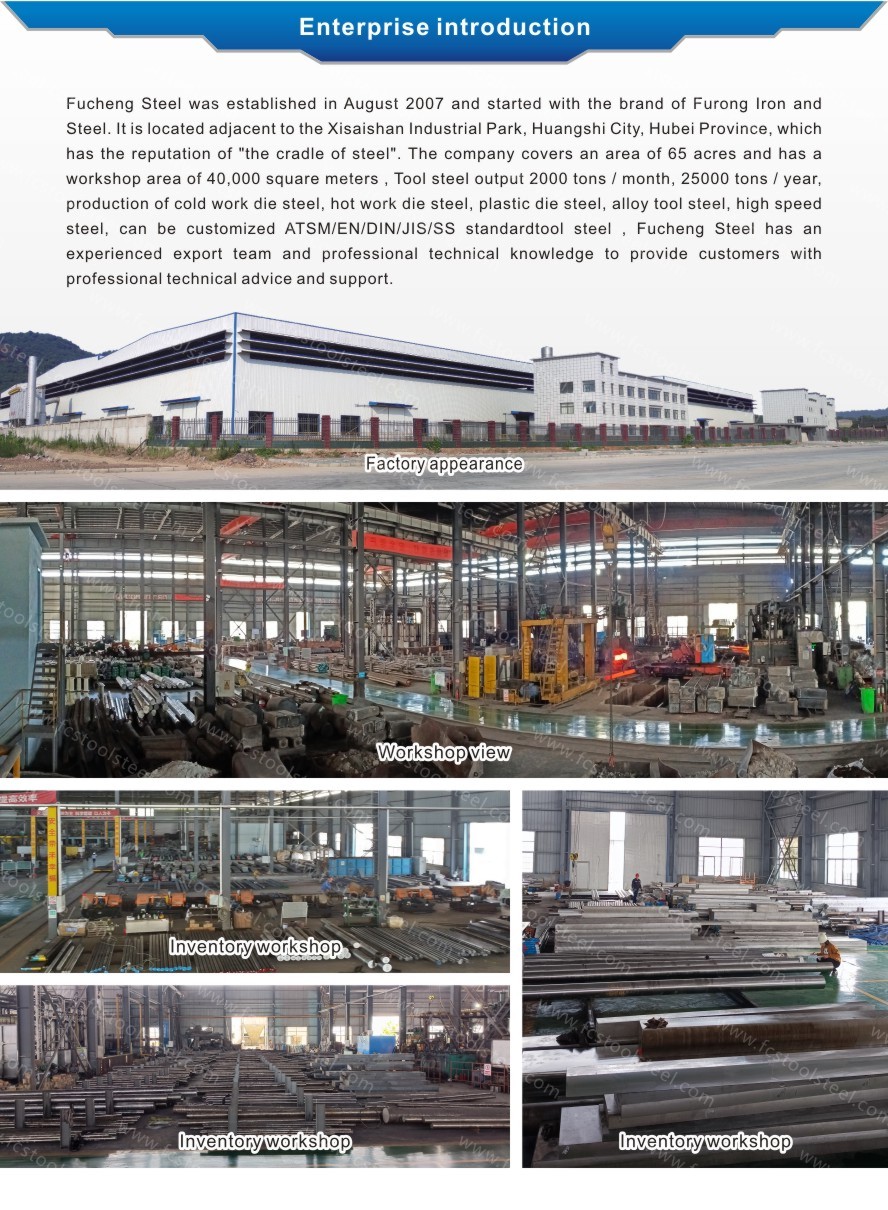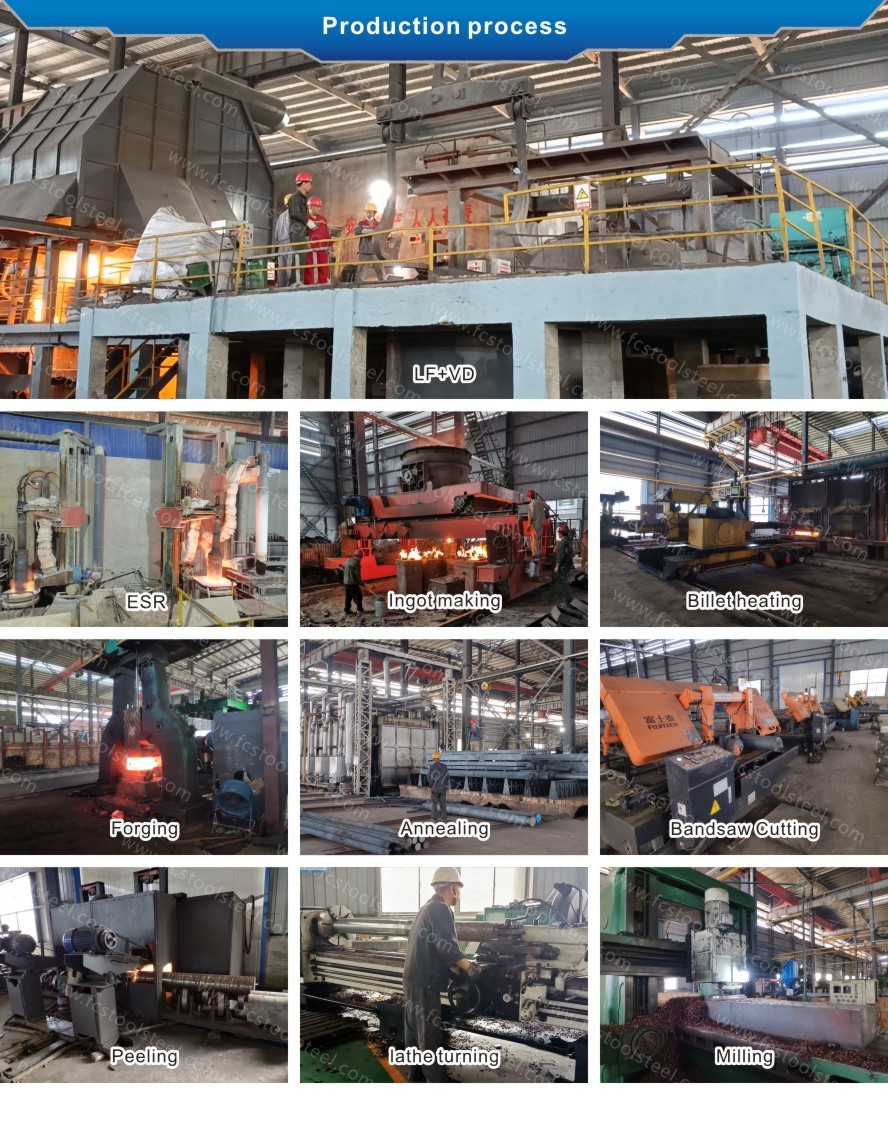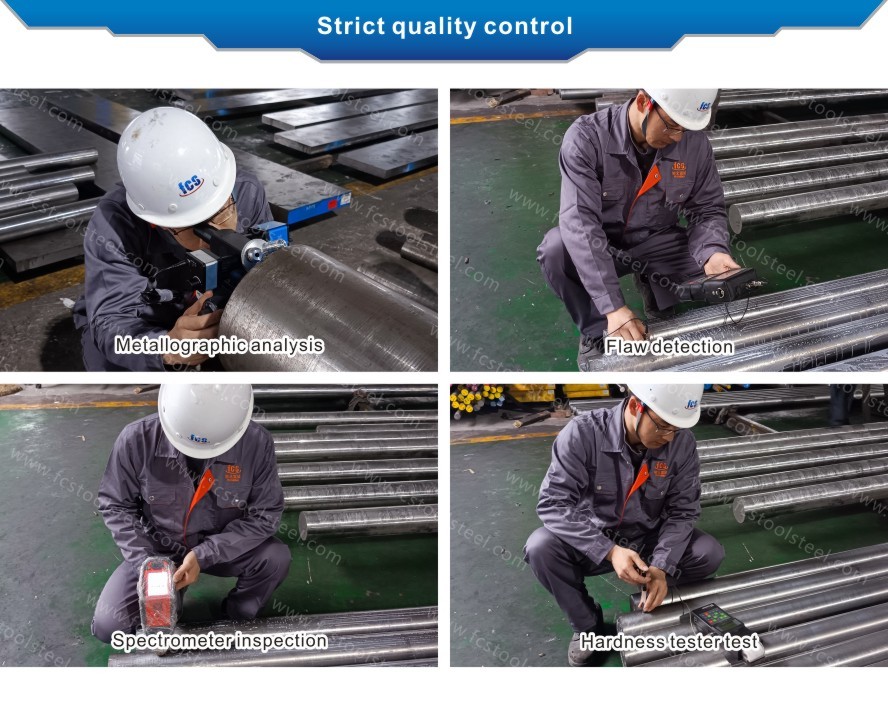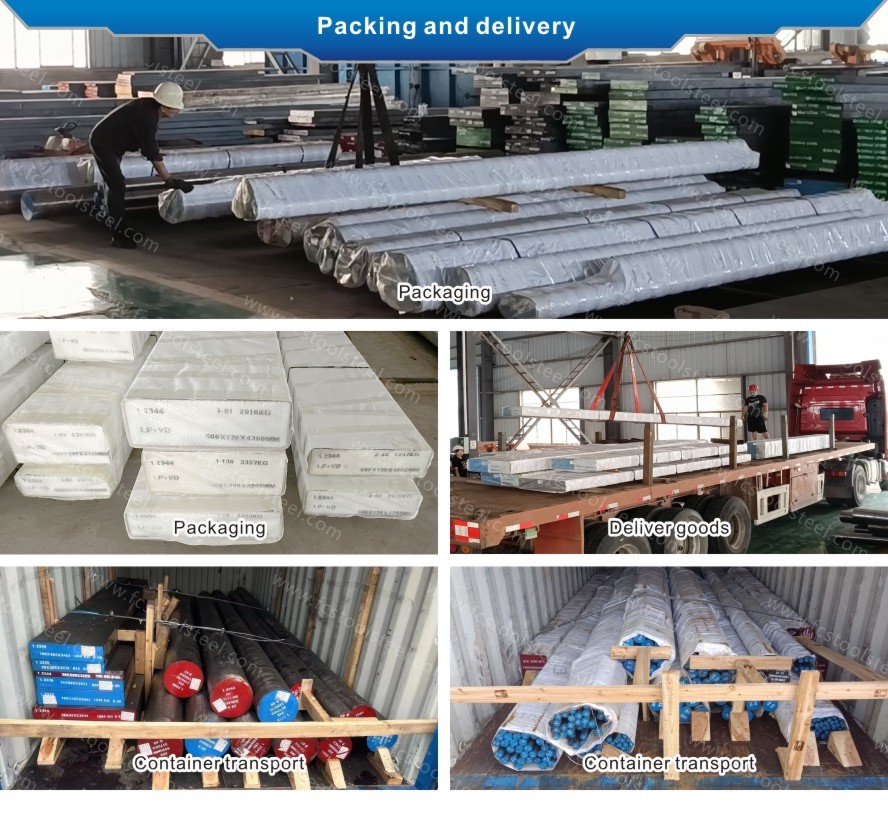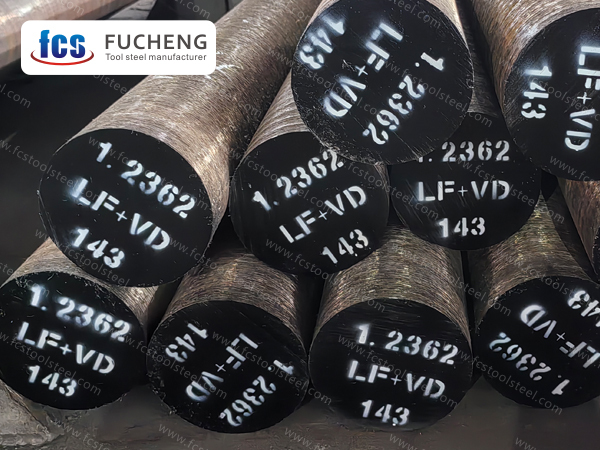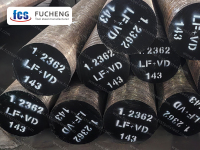
1.2362 tool steel | X63CrMoV5-1
1.2362 steel is a high alloy hot work die steel designed for extreme working conditions. Through composition and process optimization, it combines high hardness, wear resistance, thermal stability, and toughness, maintaining stability under harsh conditions such as high temperature and high pressure. 1.2362 steel is widely used in aerospace, automotive manufacturing, and precision industry.
- FUCHENG
- China
- 1 Month
- 2000 Tons/Month
- Information
1.2362 TOOL STEEL
| Smelting and Manufacture Method: | LF+VD+ESR+Forged |
| Delivery Condition: | Annealed |
| Delivery hardness: | ≤225 HBS |
| UT Test Standard: | Sep 1921-84 Class3 D/d,E/e |
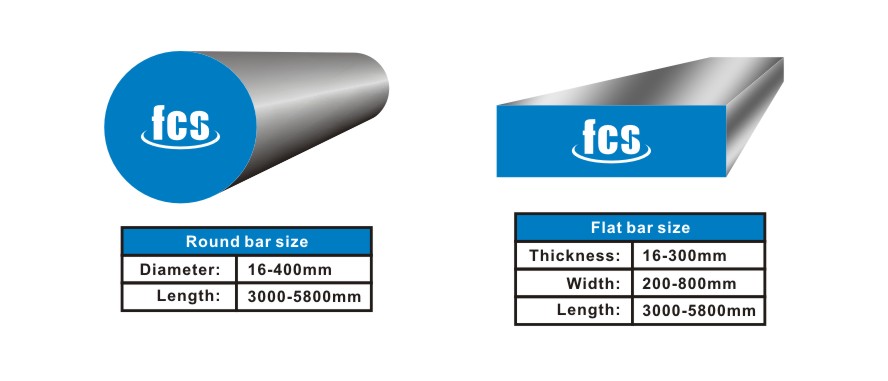
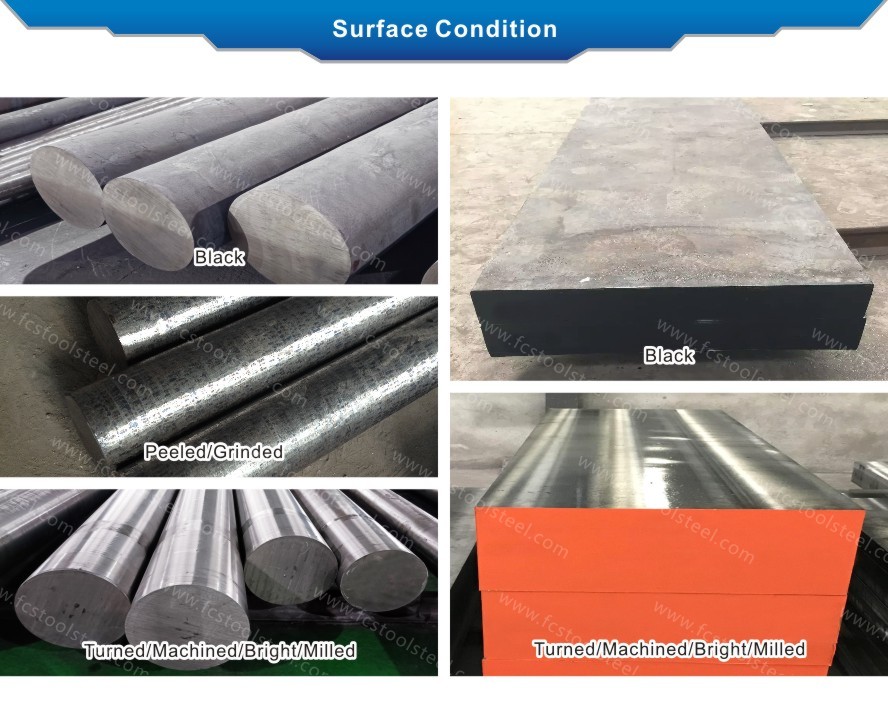
1.2362 STEEL GRADE COMPARISON AND CHEMICAL COMPOSITION COMPARISON
| Standard/Steel Grade | Chemical Composition(%) | ||||||
| C | Si | Mn | Cr | Mo | V | ||
| DIN/W-Nr. | X63CrMoV5-1/1.2362 | 0.60~0.65 | 1.00~1.20 | 0.30~0.50 | 5.00~5.50 | 1.00~1.30 | 0.25~0.35 |
APPLICATION
1.2362 steel is mainly used in hot work molds, such as die-casting molds. 1.2362 steel has good heat resistance, wear resistance, and thermal fatigue resistance, and can maintain good strength and hardness in high temperature environments. It is suitable for mold working environments that can withstand large impact loads.
1.2362 Steel Characteristics
1.2362 steel, as a cold work alloy mold steel, corresponds to the European EN specification X100CrMoV5-1. With its high hardness, high wear resistance, and excellent hardenability as its core advantages, it is specially designed for high-precision and high load cold work molds to ensure reliable performance under harsh working conditions.
1.2362 steel has a hardness of HRC 60-63 in the quenched state, and maintains excellent performance even after high-temperature tempering. The hardness decay rate is less than 15% at 550 ℃, and its thermal stability is significantly better than that of ordinary tool steel, making it suitable for high-temperature and high-pressure working conditions.
The heat treatment process for 1.2362 steel adopts oil quenching or air quenching after austenitization at 930-970 ℃, combined with low-temperature tempering at 180-250 ℃ to maintain high hardness, or high-temperature tempering at 500-550 ℃ to enhance toughness. The critical quenching section diameter reaches 30-40mm, suitable for large mold manufacturing.
The outstanding wear resistance of 1.2362 steel comes from its high-density carbide network, mainly containing Cr ₇ C Ⅲ - type carbides with a hardness exceeding 1600 HV. The optimized carbide distribution can withstand the severe wear of metal sheet punching and extend the service life of cold stamping dies by more than three times.
The forging process of 1.2362 steel requires controlling the initial forging temperature of 1050-1150 ℃ and the final forging temperature of ≥ 800 ℃ to avoid carbide coarsening. After annealing, the hardness is ≤ 230 HB, and the machinability is good. The processing speed of hard alloy cutting tools can reach 80-120 m/min.
Nitriding treatment of 1.2362 steel can further improve its performance, with a surface hardness exceeding 1200 HV and a friction coefficient reduced to 0.1-0.15. When the depth of the nitriding layer is 0.1-0.3mm, the wear resistance life is increased by 4-6 times, which is suitable for precision plastic mold cavities.
